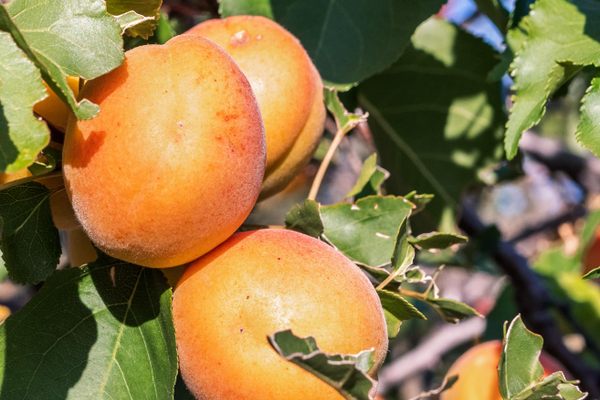Fruits & Vegetables
Ridgeway Cantaloupe
This rare, distinguished North Carolina melon once fed presidents and kings.
In the early 20th century, immigrant farmers in the small community of Ridgeway, North Carolina, packed wooden crates full of local cantaloupes, loaded them onto boxcars, and shipped the lot off to big cities. Purveyors of haute cuisine, including the Waldorf Astoria in New York, served the sweet, precious produce to their clientele. Most notably, Ridgeway cantaloupes were shipped to Washington, D.C., in 1939, to be enjoyed by King George VI and President Franklin D. Roosevelt as the two leaders discussed the formation of an alliance in anticipation of World War II.
The Holtzmann family—among the last commercial growers of Ridgeway cantaloupe—still has the official letter that was included with this Washington-bound batch of fruit. German immigrants like the Holtzmanns flocked to the Ridgeway area after the American Civil War as plantations were going bankrupt and cheap land went up for sale. These European farmers began growing cover crops to help replenish the soil, which had been stripped of nutrients by cotton and tobacco. They later added fruit, including cantaloupe.
With a sweetness that far outshines that of today’s grocery store melons, the Ridgeway quickly earned fans. According to the North Carolina Folklife Institute, Ridgeway’s farming community was filling 14 railroad cars every day at one point. But following a series of rain-heavy summers in the late 1950s, entire fields rotted as a result of blight and standing water. Farmers no longer had the stock to supply the nation and the heirloom crop shrunk back to small-scale, local gem.
Today, Richard Holtzmann still grows cantaloupes in Ridgeway, just like his ancestors did. After a six- to eight-week growing season, the fruit is ripe: At the slightest touch, a perfect one should slide right off the stem. Then, an old metal sign appears at the end of the family’s driveway: “Richard Holtzmann & Son. Ridgeway Cantaloupes.” The smallest of offerings may sell for less than a dollar, while the heftiest go for about three bucks.
For 45 years, their cantaloupe cart has stood by the same produce stand, beneath the shade of pecan trees along U.S. Highway 1. If everyone’s busy out back, customers drop money in an “Honest Box” attached to the cart. To pick a perfect cantaloupe, make sure it’s heavy for its size. Beneath the thick netting, look for cream-yellow skin, and the spot where the stem meets the fruit should be slightly cracked and oh-so-fragrant.
Where to Try It
-
Holzmann Farm Produce
364 Hwy 1 South, Norlina, North Carolina, 27563, United StatesShockingly sweet Ridgeway cantaloupes are sold from the family’s Highway 1 roadside stand every summer.
Written By
 rachelrummel
rachelrummel
Sources
- www.ncfolk.org/folk-artists/holtzmanns-farm-produce/
- www.ourstate.com/cantaloupes-ridgeway-royalty/
- www.ncfieldfamily.org/farm/ridgeway-cantaloupes-cause-melon-mania/
- nanciemcdermott.com/dev/wp-content/uploads/2019/01/Edible-Piedmont-Article-Nancie-McDermott-Canteloupe.pdf
- books.google.com/books?id=WklmDwAAQBAJ&pg=PT174&lpg=PT174&dq=holtzmann+and+son+produce+ridgeway&source=bl&ots=9fTZzZtbdI&sig=ACfU3U2yd44qNJ2KFSgGuEEgiQcacCjXzg&hl=en&sa=X&ved=2ahUKEwiSrPqtz9_iAhVhoFkKHWTuB6UQ6AEwC3oECAkQAQ#v=onepage&q=holtzmann%20and%20son%20produce%20ridgeway&f=false
- www.communityclinicalconnections.com/_downloads/2013_NC_Directory_of_Farmers_Markets_Roadside_Stands_and_Produce_Markets.pdf
- transforminghealthnc.org/farmers-markets/warren-county/















